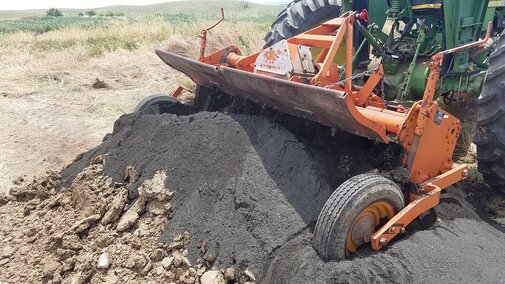Much organic N is applied in Nebraska as livestock manure, municipal bio-solids, and other organic material. The use efficiency of this organic N is often low as fertilizer N is often not adequately reduced to account for the manure application due to low confidence in the organic N availability.
Two three-year studies addressed this. One was completed in 2017 with work at Brule and the Eastern Nebraska Research and Extension Center near Mead. The second, to be completed with the 2018 harvest, was conducted at six locations in eastern Nebraska. These addressed the prediction of applied organic N availability and the use of crop canopy reflectance to guide in-season N application for manured fields.
- The livestock manures included two beef feedlot manures, composted dairy manure and turkey manure. The results indicated similar percent of applied organic N available to crops for all manures. Past recommendations have differentiated by manure type, but these results indicate 30%, 15%, and 7% of applied organic N being available for the first, second, and third crop are reasonably conservative estimates for all livestock manures.
- The three municipal biosolid products from Lincoln and Fremont had similar organic N availability; however, the percent availability of applied organic N was about half that for the livestock manures, that is, about 15% of the applied organic N was available to the first crop after application.
- Livestock manures and municipal biosolid products had similar carbon-to-nitrogen ratios. However, the biosolid products contained 50-100% more lignin, cellulose, and hemicellulose compared with the livestock manure, which apparently caused the relatively low organic N availability to crops from the biosolids.
The research findings show that the use of crop canopy reflectance to guide in-season N application can be adapted for manured fields. Efficiency in N use was gained using the procedures developed for non-manured fields. The data set is large and needs more analysis and interpretation with the expectation of developing procedures more specifically for manured fields. The results indicate, however, that for manured fields:
- an optimal pre-plant N rate was 55 lb/ac with the balance applied in-season as indicated by canopy reflectance;
- the best time for sensor guided in-season N application for manured fields is between V12 to V14.
These guidelines appear to be appropriate for the first, second, and third crop following application.
Further analysis of the data and interpretation of the results is underway with revisions to UNL manure nutrient management Extension resources anticipated later in 2018. (See Improved Use Efficiency of Applied Organic Nitrogen.)
Consideration should also be given to another university study conducted in western Nebraska. Before manure is land-applied, much nitrogen loss occurs. Research conducted at the Panhandle Research and Extension Center at Scottsbluff found that amending manure with coal combustion residue reduced ammonia-N volatilization loss by 24% during manure handling and storage.

